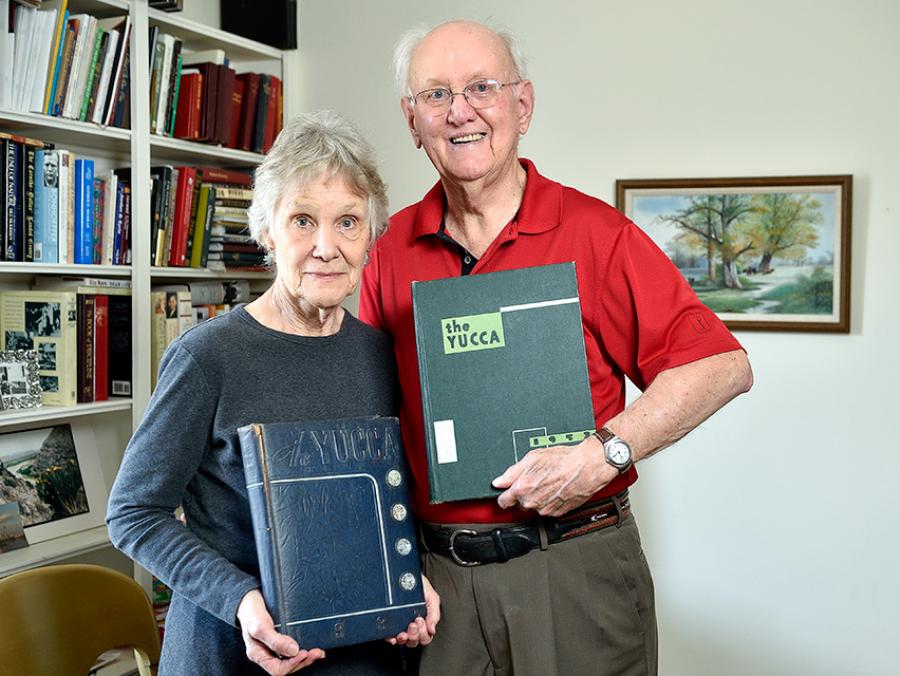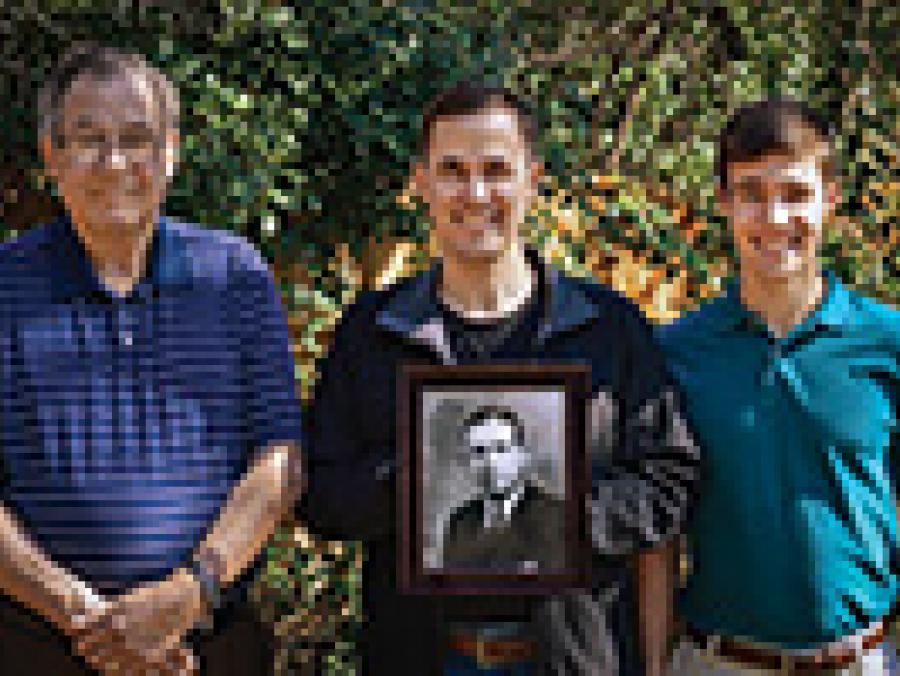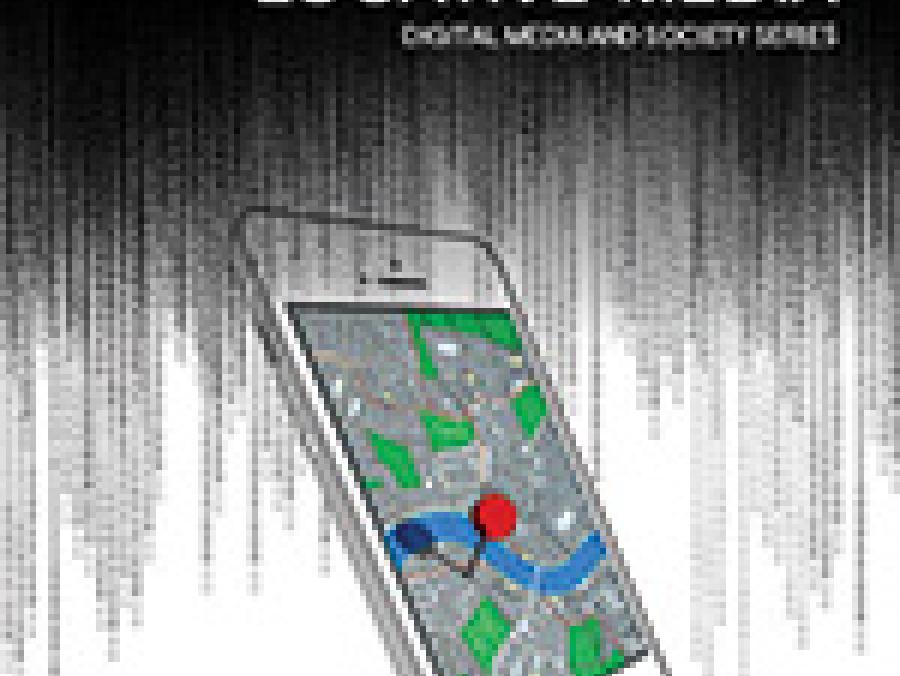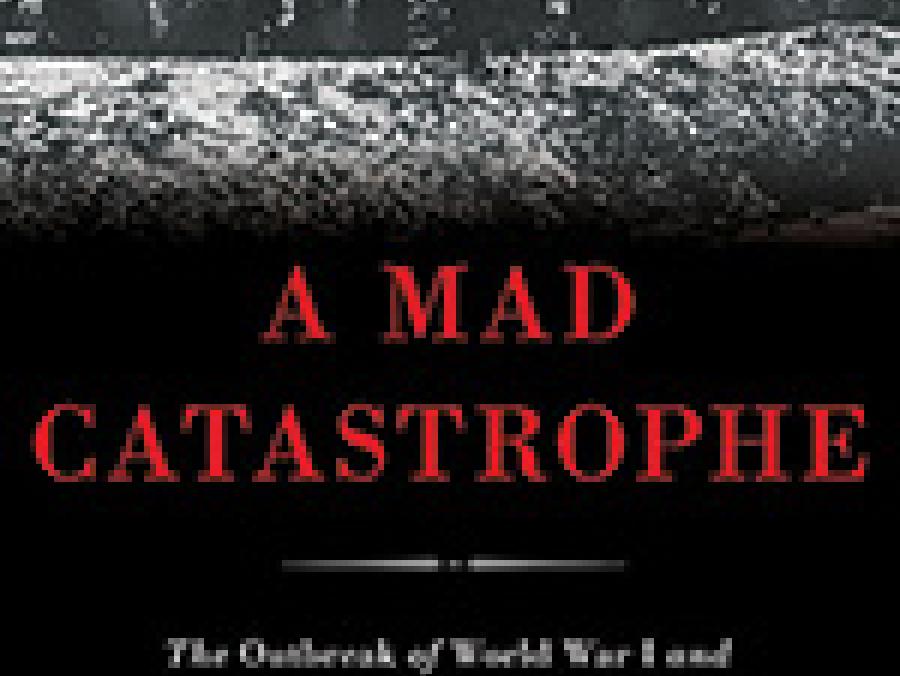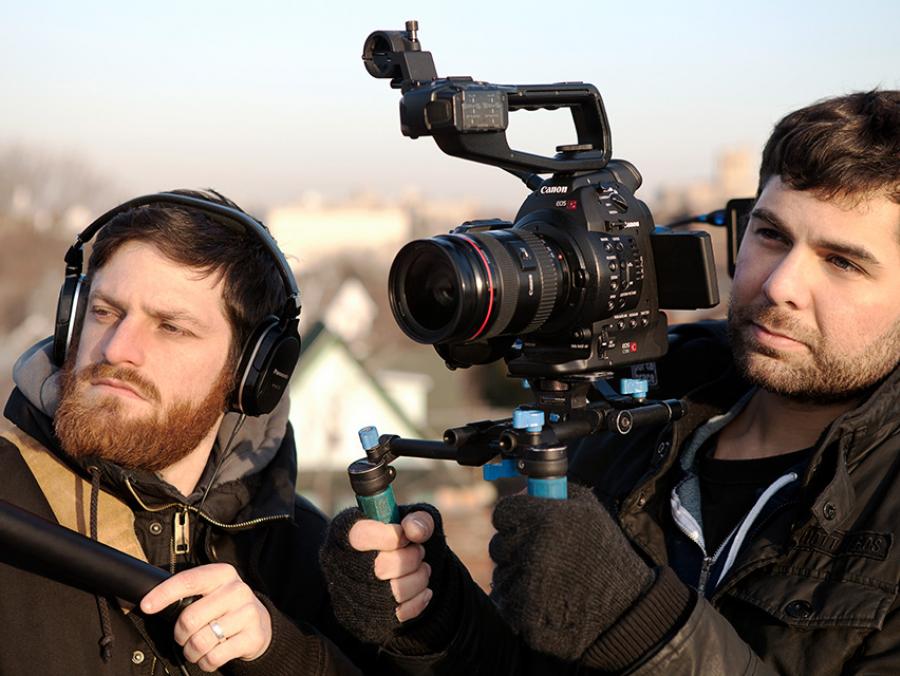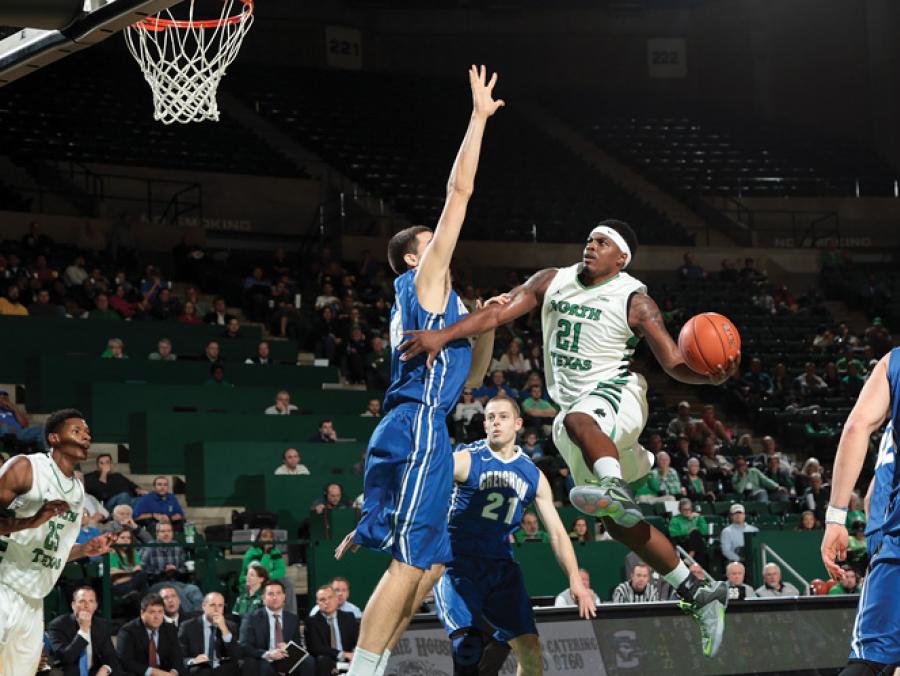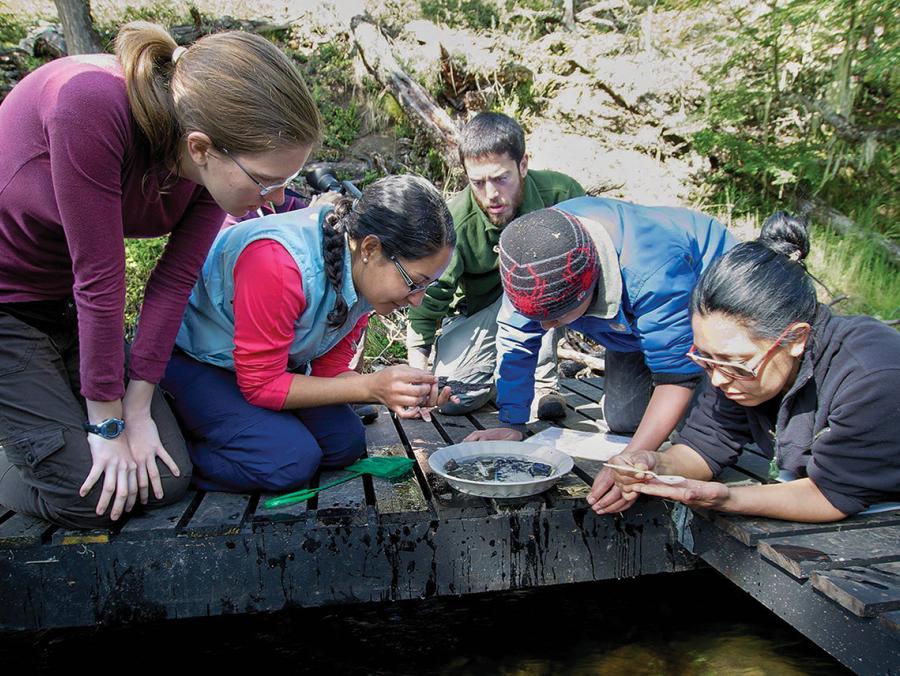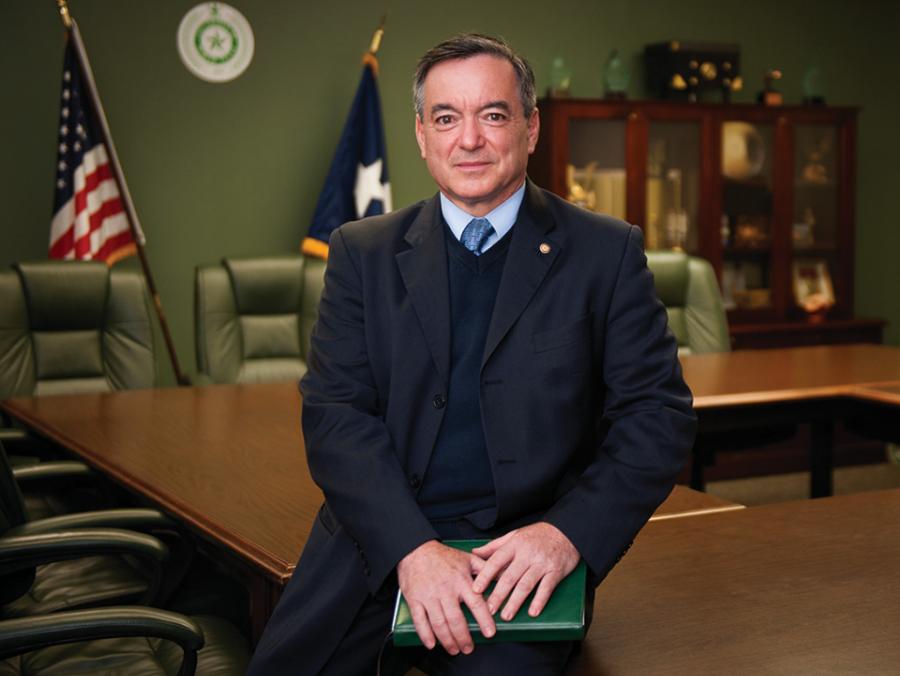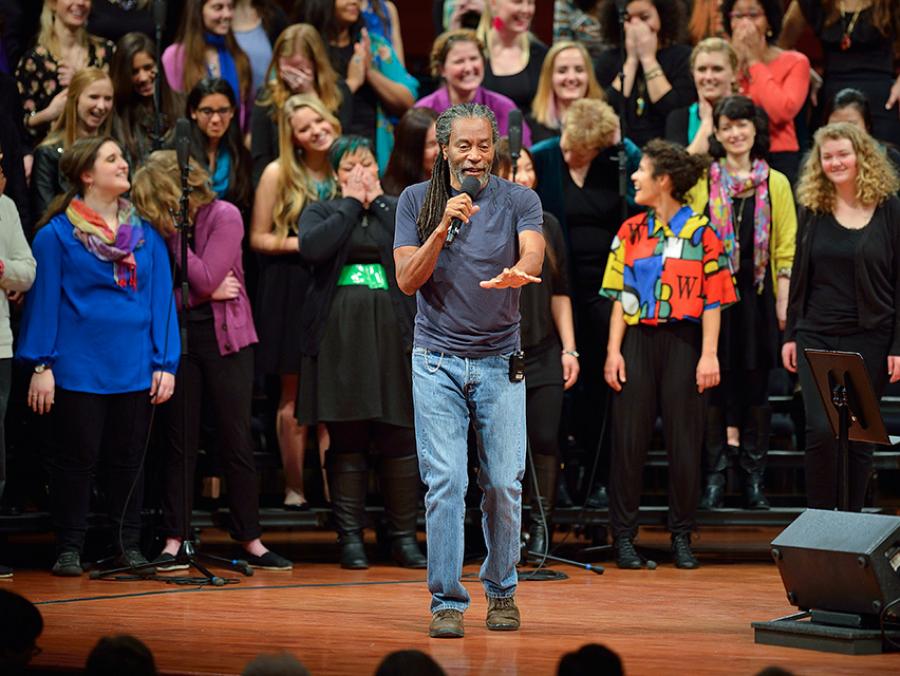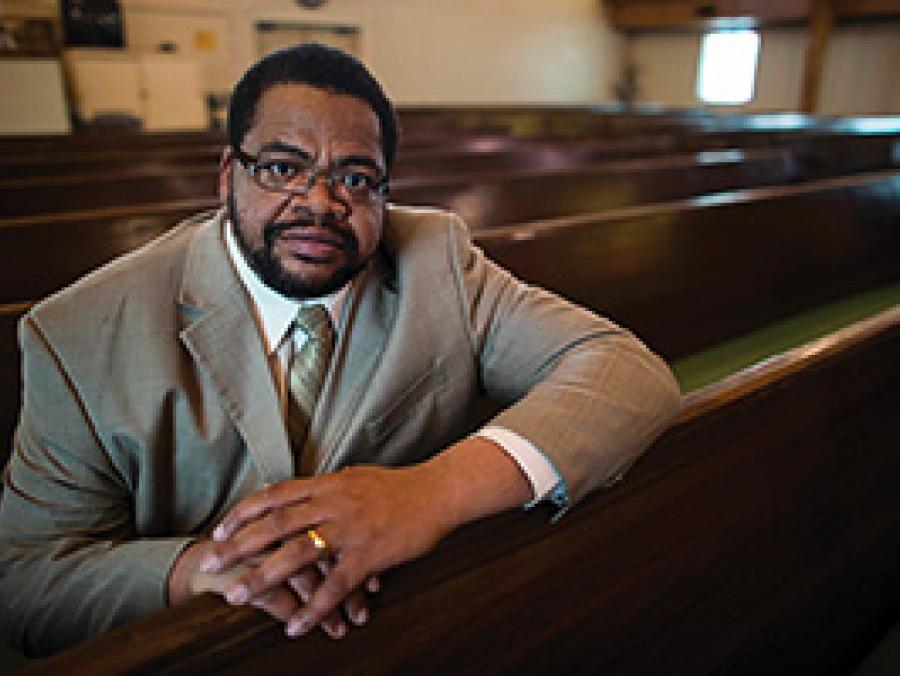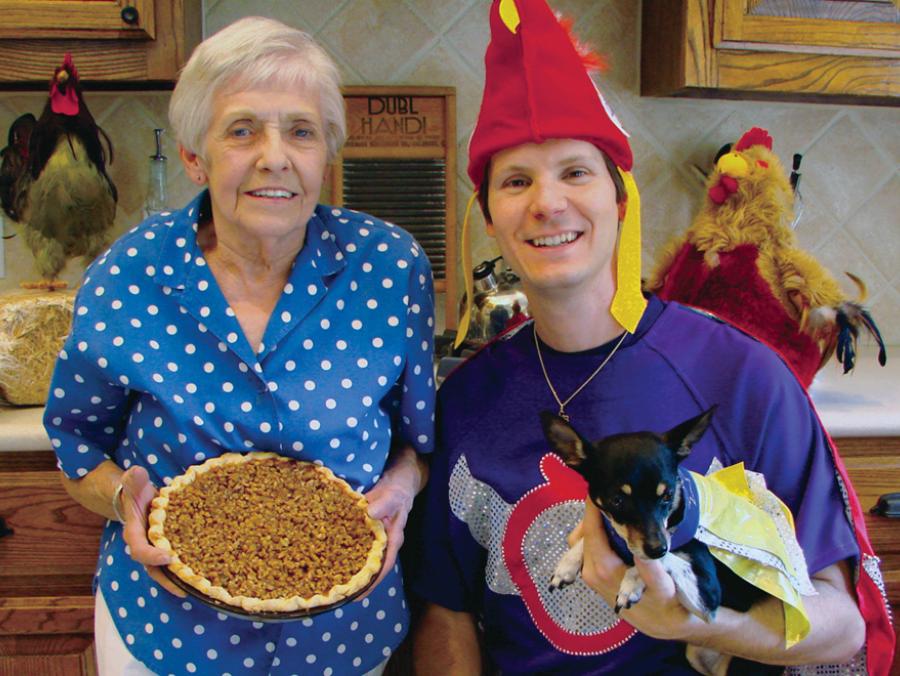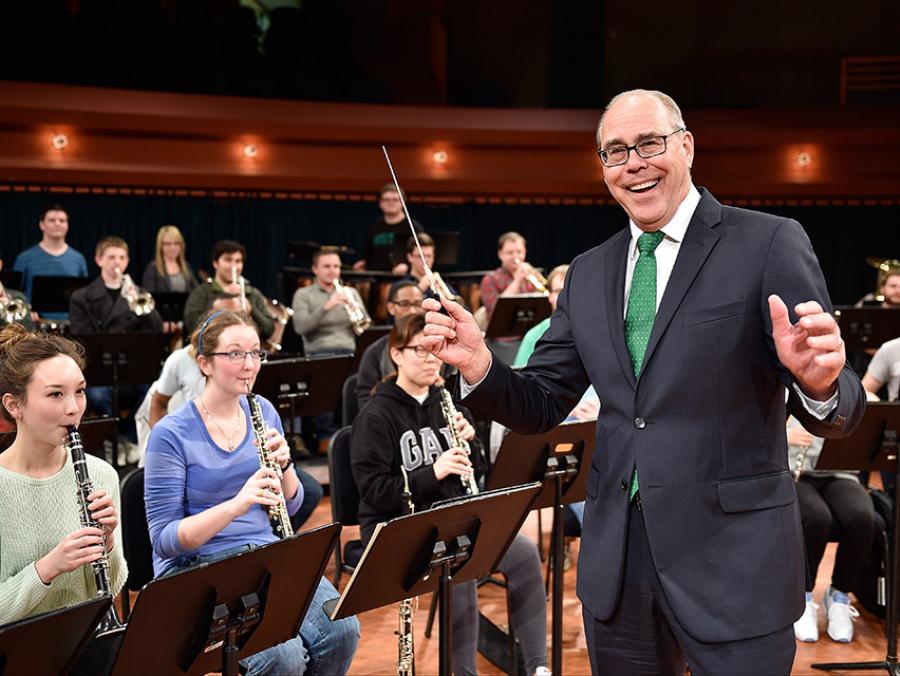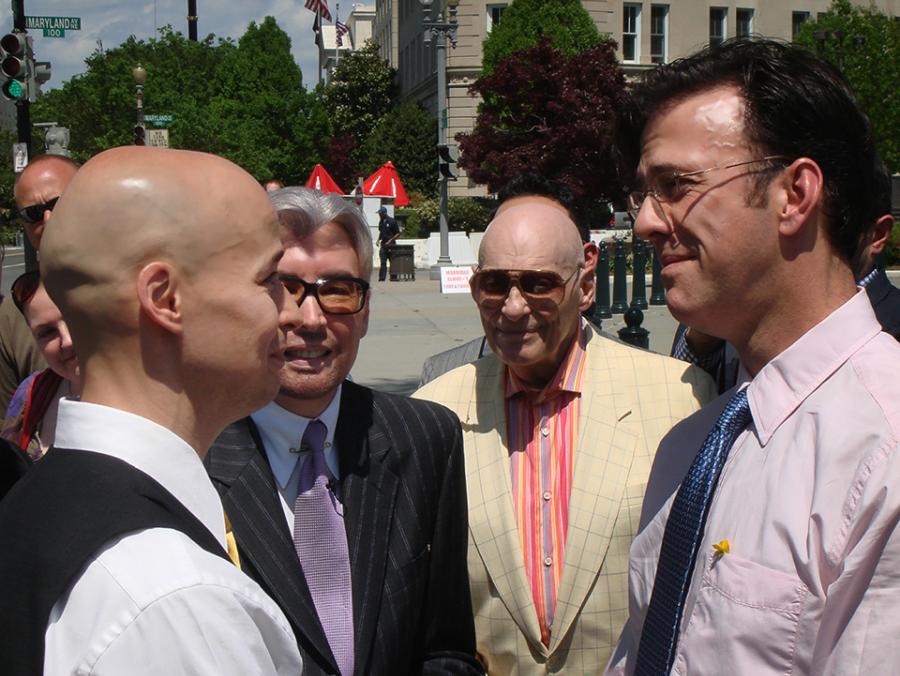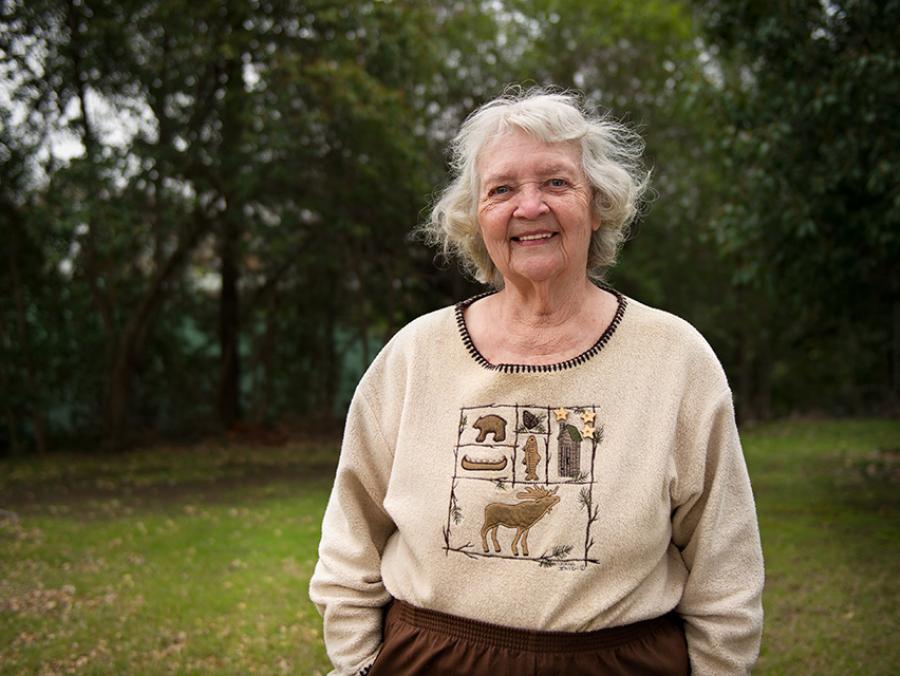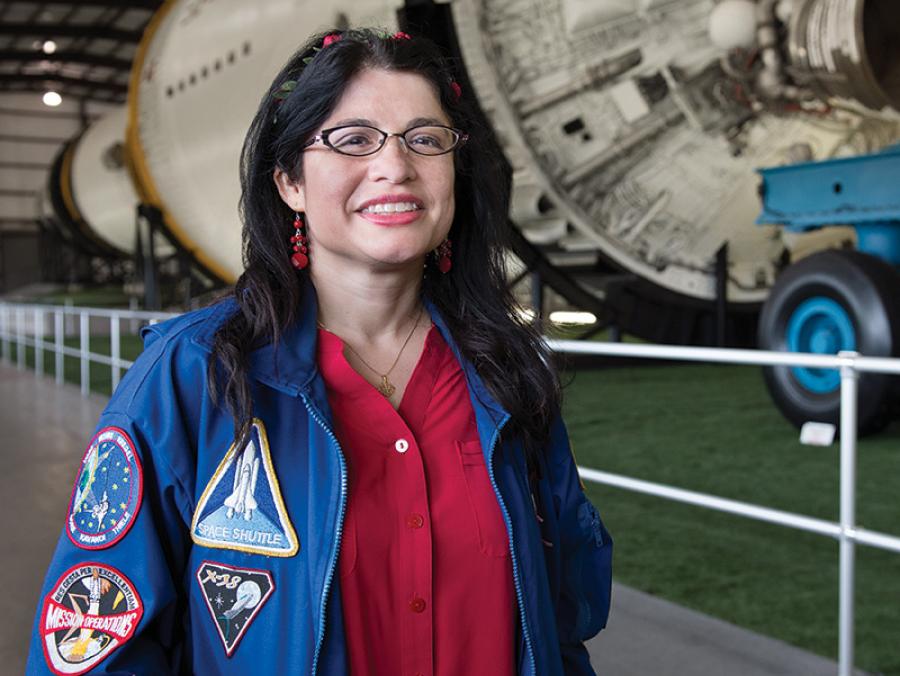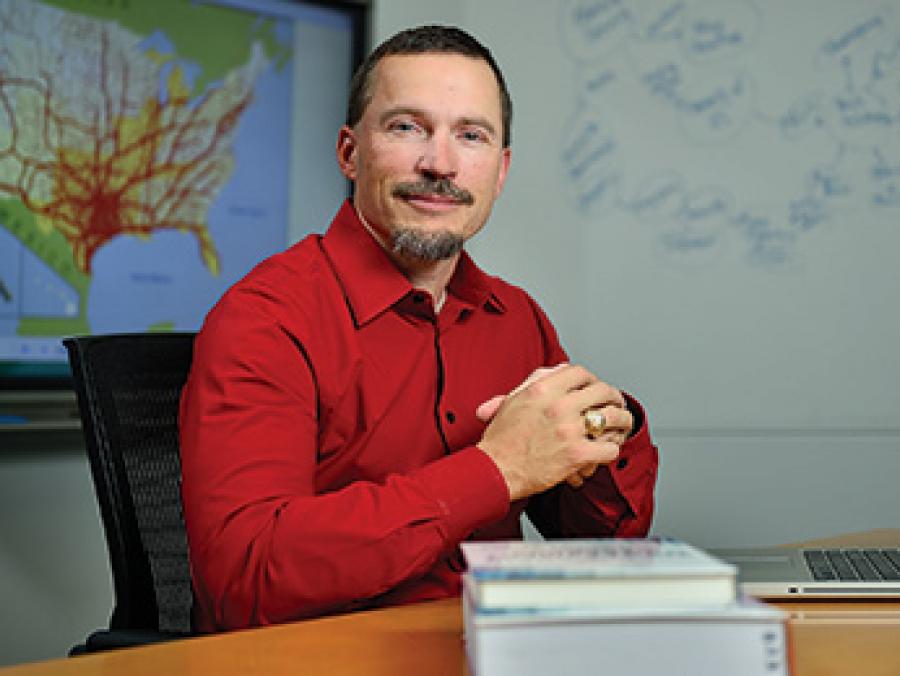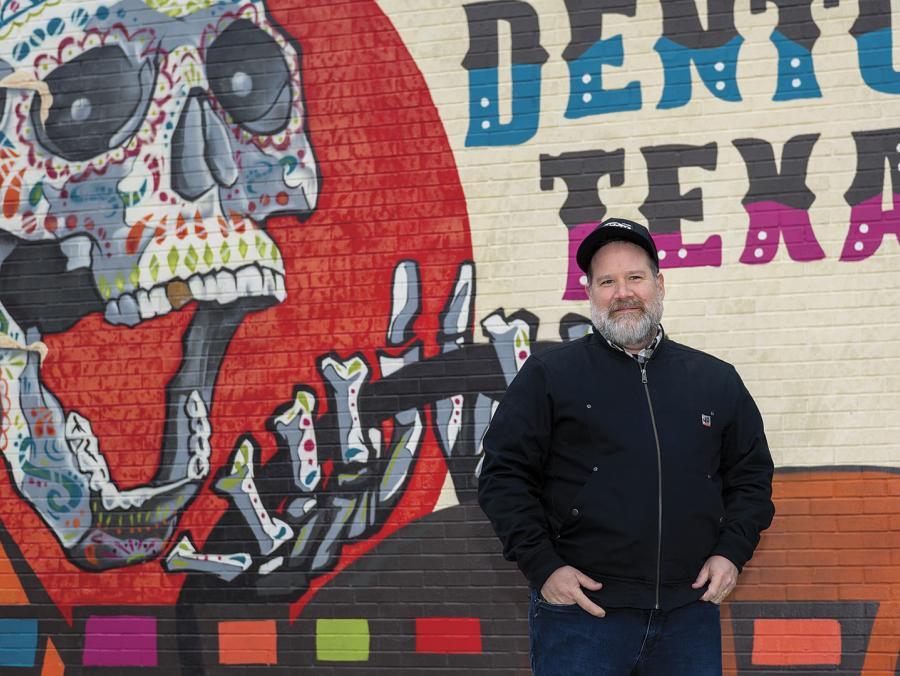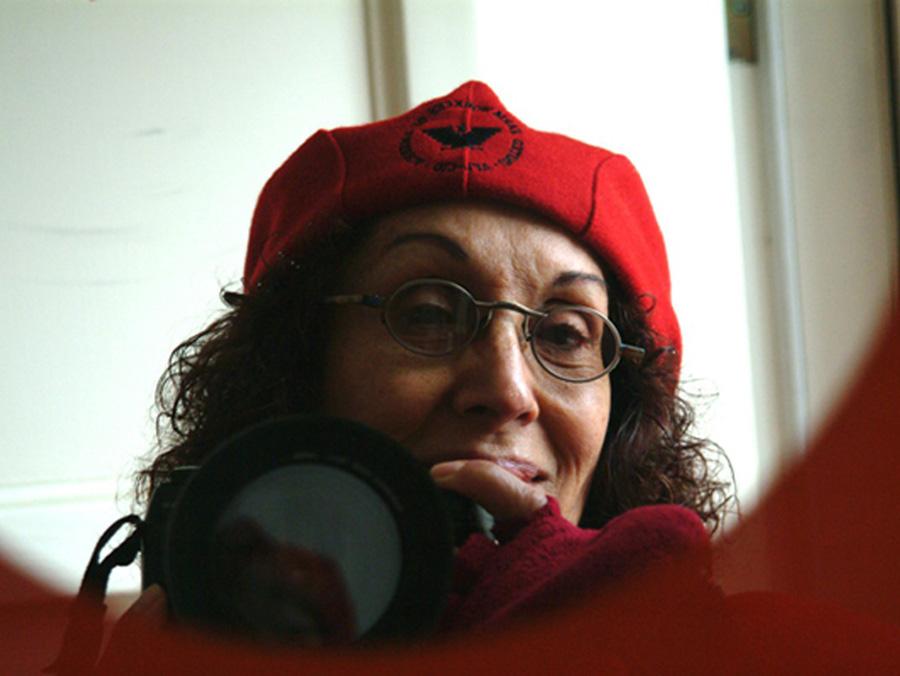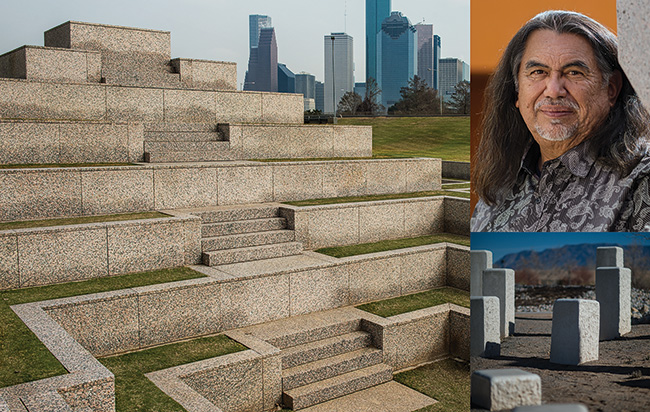 Each day, from Texas to Egypt to India to China, back to the United States and at dozens of other worldwide public locales, people experience art created by UNT alumni. Spectators might see a granite monolith reaching for the sky, a metal design twisting its way down a path or photographs of the faces of fellow community members. Alumni who create public art say it should blend in with a community while enhancing it, evoking thought and giving those who live there an appreciation for the shared meaning of art.
Each day, from Texas to Egypt to India to China, back to the United States and at dozens of other worldwide public locales, people experience art created by UNT alumni. Spectators might see a granite monolith reaching for the sky, a metal design twisting its way down a path or photographs of the faces of fellow community members. Alumni who create public art say it should blend in with a community while enhancing it, evoking thought and giving those who live there an appreciation for the shared meaning of art.
"Without art, we're a cultureless society," says Jesús Moroles ('78), whose acclaimed public art sculptures contributed to former President George W. Bush awarding him the 2008 National Medal of the Arts, the highest award given to artists by the U.S. president. "It's good for aesthetics, but you also can tie everything back to it. You can teach mathematics with it. You can learn a lot from art."
UNT's College of Visual Arts and Design, considered one of the best art schools in the South and Southwest, has a legacy of notable alumni such as Moroles and other acclaimed sculptors, painters, designers and educators.
In sharing their talent with audiences in a public forum, these artists break down barriers with works worldwide that are accessible, engaging, reflective, empathetic and honest.
Moroles, for example, has art in Egypt, China and India and in the White House. At the Smithsonian Institute, his work also includes permanent collection pieces.
"Art is one of the things that might save us, save humanity," Moroles says. "If we could get people out of their cities, out of their countries and traveling to see art around the world, then we'd all have more of an open mind toward each other."
Sacred places
In presenting Moroles with the 2008 National Medal of the Arts, Bush noted the alumnus' "enduring achievements as a sculptor" that "grace America's landscape." It was a proud moment for Moroles and for his parents, who attended with him and his daughter, who he says is his greatest achievement.
It also was a long way from Moroles' childhood along the Gulf Coast of Texas, where his parents sent him to work with his uncle, a master mason from Mexico, during the summers.
"He built hurricane-proof homes and hotels," Moroles recalls. "I was 13 at the time and my attitude was, 'If I can make a hurricane-proof home, then I can do anything.' I think that's how I gravitated to the heavy stuff."
Moroles' medium is granite. When he can, he uses locally sourced granite for projects because it's important to connect art to the community, he says. He prepares and finishes much of his work at his studio in Rockport before shipping it out for installation.
When he arrived at UNT, he had never worked with stone or granite before. The first time he hit the granite, his chisel broke in half. But a bit of research and some additional shopping later, he acquired goggles, ear plugs and a coat to protect him from the debris cloud kicked up by the pneumatic hammer required to cut through the stone.
"When I'm working, I'm in this cocoon," Moroles says. "That first time I was working on the piece, it was pushing me and I was pushing back. When I turned off the pneumatic hammer and the dust settled, there were 30 other students standing right next to me. That's when I felt a connection between me and the stone. It was the hardest thing I'd ever done, and I think everyone around me could see that struggle. They could feel it."
Moroles' ability to challenge himself through his sculptures impressed many early in his career. In 1982, he earned a prestigious Awards in the Visual Arts fellowship, and in 1985, he received a National Endowment for the Arts matching grant for an environmental installation in Alabama. In 1987, he completed one of his favorite -- and likely most viewed -- pieces. Lapstrake, a 64-ton, 22-foot-tall sculpture sits in the heart of New York City, just across from the Museum of Modern Art.
"To have a piece of art in Manhattan is a major feat," says Moroles, who received a UNT Distinguished Alumni Award in 1996. "I feel proud that it was put there so early on in my career."
One piece that is very meaningful to Moroles is the 1990 Houston Police Officers Memorial, one of his largest-scale single works. Shaped like a cross with one pyramid in the center, it has four outer pyramids inverted that sink into the ground.
"It's in the vein of work that I'm doing now, creating sacred spaces in the world," Moroles says. "After I finished it, someone sent me a photo of two daughters of a police officer who died, who were at the memorial. They said it was their favorite place. I want it to celebrate life. I believe these spaces should be used. By being used, they create an energy that celebrates life."
Personable and accessible
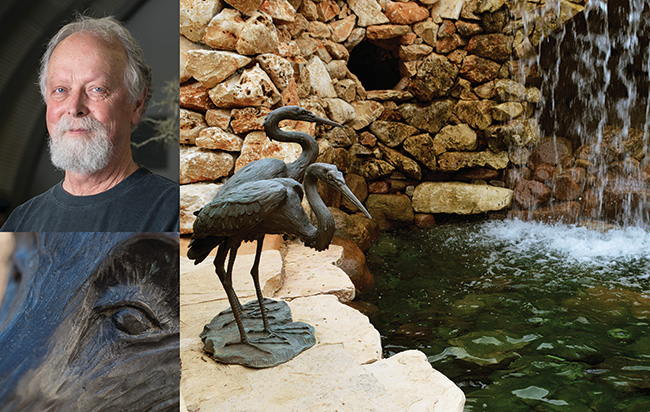 Public art bridges the gap between artist and viewer, says David C. Iles ('77 M.F.A.). He recalls taking his son, Martin, to museums at a young age so that the youth could appreciate art -- but the obvious disconnection bothered him.
Public art bridges the gap between artist and viewer, says David C. Iles ('77 M.F.A.). He recalls taking his son, Martin, to museums at a young age so that the youth could appreciate art -- but the obvious disconnection bothered him.
"He was 3 and we told him, 'Put your hands in your back pocket. Don't touch,'" remembers Iles. "I like public art because it's more personable. You can touch it. I like the idea that viewers can feel a sense of ownership over the art."
The path to creating public art sculptures almost didn't happen for Iles. Originally a painter, he took a class in sculpture after completing his undergraduate degree at Lamar University. He enjoyed it and began to get serious about sculpture while working at the lumber yard owned by his wife's family, carving pieces of wood.
"When I came to North Texas to get my master's degree, I had never cast metal; I was only carving in wood," Iles says. "The professors here were very open to letting us explore and experiment with different media."
After a brief career working in oil fields, Iles gravitated back toward art and worked for UNT in the metals shop from 1987 to 2000. It was after an encounter with Dallas real estate developer Trammell Crow that Iles realized his dream of working full time as a sculpture artist.
"I had been making a lot of animal skulls, skeletons and marionettes," Iles says. "Mr. Crow asked if I could do some pieces for him so I started creating animals with their flesh on and I liked it."
Iles' lifelike grackles, deer, rabbits, ducks, squirrels and other wildlife attracted attention. He has pieces at the Lady Bird Johnson Wildflower Center and the Dallas Arboretum and public commissions from the city of Denton, the Irving Art Association and others.
At his foundry north of the Dallas-Fort Worth area, Iles casts his own and other artists' projects, using UNT students when he can.
"It was a dream come true to work full time as an artist," Iles says. "It's important to be involved in public art, nice to do something that so many people get to see and experience."
Universal audience
 While completing his master's degree, Iles taught classes at UNT, and freshman Barrett DeBusk soaked up everything he could from Iles' 3-D art class.
While completing his master's degree, Iles taught classes at UNT, and freshman Barrett DeBusk soaked up everything he could from Iles' 3-D art class.
"I went straight for sculpture," says DeBusk ('82). "I put myself through school building houses. I liked the construction part of it."
When DeBusk started creating metal sculptures, he received encouragement from the art faculty. He remembers Regents Professor of ceramics Elmer Taylor telling him that his works looked cool and that he should do more of them.
"That was about the best advice from a teacher I've received," DeBusk says, "to keep going."
DeBusk's early sculptures led to a series in the 1990s of welded steel structures painted black to look like ink drawings of people engaged in different activities -- playing in a band, riding bikes.
DeBusk's next body of work was what he calls The Fat Happies, playful, brightly colored tubular sculptures that stand on one leg and have the other leg and arms spread out as if dancing.
"Outdoor sculpture needs color, especially if it's sort of humorous," he says, "and I've never been one to be too serious."
His artwork, which appeals to children and adults, was chosen for Santa Fe's Art in Public Places program and Art in the Streets in Mesa, Ariz., and is featured at a playground in Washington, D.C., the Fort Worth Museum of Science and History and a children's hospital in Chicago. DeBusk was in college when he visited his first museum and says it's important to him to reach out to children so they can experience art at a young age.
"Kids will tell you the truth about what they think," he says, "and if they respond well to your work, you've hit a universal nerve."
Community engagement
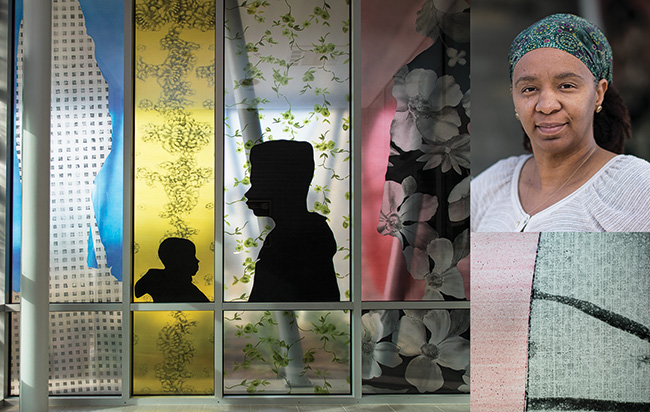 Creating public art also is a way to give back to people, says Letitia Huckaby ('10 M.F.A.).
Creating public art also is a way to give back to people, says Letitia Huckaby ('10 M.F.A.).
"I like that you can create something specific to the community," says Huckaby, who uses photography and mixed media in her work.
She was a documentary photographer when she decided to pursue her master's at UNT. Right before she started, her father died. The experience made her think about how she'd always wanted to tell others' stories through her photography but never her own. So, she began to concentrate on stories from Louisiana and Mississippi where her family is from -- places she didn't get to know since she was in a military family that traveled for much of her childhood.
"The work I just finished is a portrait project on a group of nuns in New Orleans," Huckaby says. "They are an African American order that was started in the late 1800s and is still going strong."
She printed the images onto fabric, hand-stitched them in
traditional quilting patterns and had them framed. Using quilts as a subject is something she learned from observing her husband's work, a painter who was a great inspiration during her time at UNT.
"My professor, Dornith Doherty, really pushed me," Huckaby says. "It was kind of odd to be in the photo program making quilts, but she encouraged me to find my voice and allowed me the space to use mixed media."
That experience at UNT led her to create public art in Dallas and Fort Worth using photographs and more. At the Trinity River trailhead, her artwork commissioned by Fort Worth nonprofit Streams and Valleys includes black-and-white images of community members printed on porcelain enamel steel. The weather-proof substance allows the art to remain on display year-round. Her most recent public artwork is a photographic installation at Oak Cliff Branch Library in Dallas.
"My family and I went to see the library project after it was installed, and while we were there, we saw a young man walking toward us," Huckaby recalls. "It was one of the teenagers I had photographed and he got this big smile on his face. That just made me so happy -- to see him recognize himself in a piece of artwork."
Public art also is fulfilling for artists because their artwork is constantly on view, rather than only on display every so often.
"With public art," she says, "the work is always being engaged by the community."
Reflection of life
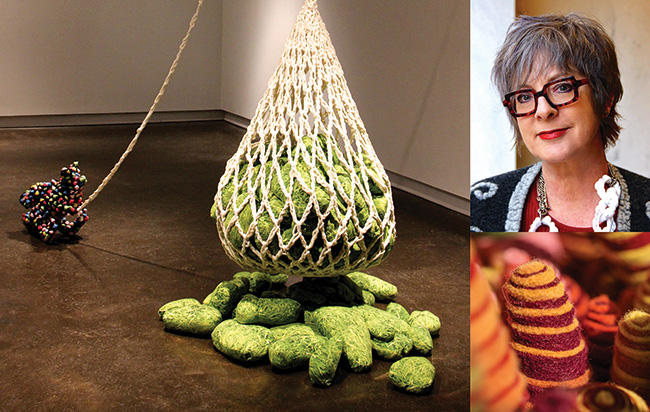 Public art can inspire and provoke, says Leisa Rich ('07 M.F.A.). It can be positive or negative, a political statement or fun, she notes.
Public art can inspire and provoke, says Leisa Rich ('07 M.F.A.). It can be positive or negative, a political statement or fun, she notes.
"It can open up people's minds in ways they're not normally exposed to," she says. "A good part of the public will never go to a gallery or a museum. I think it is the responsibility of public art to expose those people to creativity."
That creativity many times comes in the form of contemporary art since it's often the work of living artists. That is helpful for artists such as Rich, whose artwork has been seen in Atlanta's Hartsfield airport, at the Los Angeles airport, in the Dallas Museum of Art, in university and public art galleries, museums around the nation and traveling international exhibitions. Rich also is a finalist for a large commission for Fulton County Public Art in Atlanta, Ga., and will exhibit at the Baylor University gallery in fall 2016.
She started as a fiber artist creating 3-D and installations, but lately has branched out to include 3-D printing in her mixed media constructions and environments. Rich notes that having her art in the public domain allows her to reach a diverse audience.
Reaching out to others is important to Rich, who is partially deaf. A confrontation with a clerk who ridiculed her inability to hear firmed up the importance of working through her issues with her disability in her art -- something that others responded to as well. In fall 2014, Rich won Crafthaus and Surface Design Association project grants to organize an exhibition and events showcasing works by artists with disabilities who remain positive and creative despite dealing with everything from bipolar disorder to brain injury.
"The majority of artists are doing this to give something of ourselves and to get something back from the viewers," Rich says. "When you put your artwork on display, you are reaching out to other people. You hope to affect them in some way."
We'd like to know what your favorite artwork was when you were a student on campus. Tell us by leaving a comment below.



